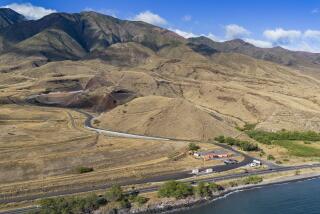How fast is lava moving? That and more covered in Hawaii volcano talks
As molten lava continues its crawl toward the village of Pahoa on the Big Island of Hawaii, scientists will share their predictions for future volcanic activity in January lectures that coincide with Volcano Awareness Month.
Four presentations are planned for consecutive Thursday evenings in the Kilauea Visitor Center at Hawaii Volcanoes National Park. The free programs are part of the “After Dark in the Park” series.
The first, which is Tuesday evening, will include an in-depth account of the lava flow that has been creeping toward Pahoa in the last six months. The latest findings will be shared by Matt Patrick, a geologist with the U.S. Geological Survey’s Hawaiian Volcano Observatory.
The Jan. 13 presentation is titled “Kilauea Volcano’s Dual Personality: A Historical Perspective.” USGS geologist Don Swanson will use historical data to justify suspicions that the eruption that began in June could lead to an explosive period. Swanson notes that the volcano has experienced violent explosive eruptions in more than half of the past 2,500 years.
On Jan. 20, the focus shifts to Mauna Loa, a less active volcano about 20 miles northwest of the better-known Kilauea. In 1914, a series of earthquakes leading to an eruption were the first to be tracked by newly installed seismographs at the volcano observatory. USGS geophysicist Paul Okubo will discuss how seismic tracking has evolved in the last century.
The movement of lava toward Pahoa will be further examined Jan. 27. Geologists Ken Hon and Cheryl Gansecki of the University of Hawaii at Hilo, who have spent decades documenting lava flows on the Big Island, will explain the ebb and flow of this molten rock.
All four lectures start at 7 p.m. The presentations are free, but park admission fees apply.
Info: (808) 985-6000.
Follow us on Twitter at @latimestravel
More to Read
Sign up for The Wild
We’ll help you find the best places to hike, bike and run, as well as the perfect silent spots for meditation and yoga.
You may occasionally receive promotional content from the Los Angeles Times.






